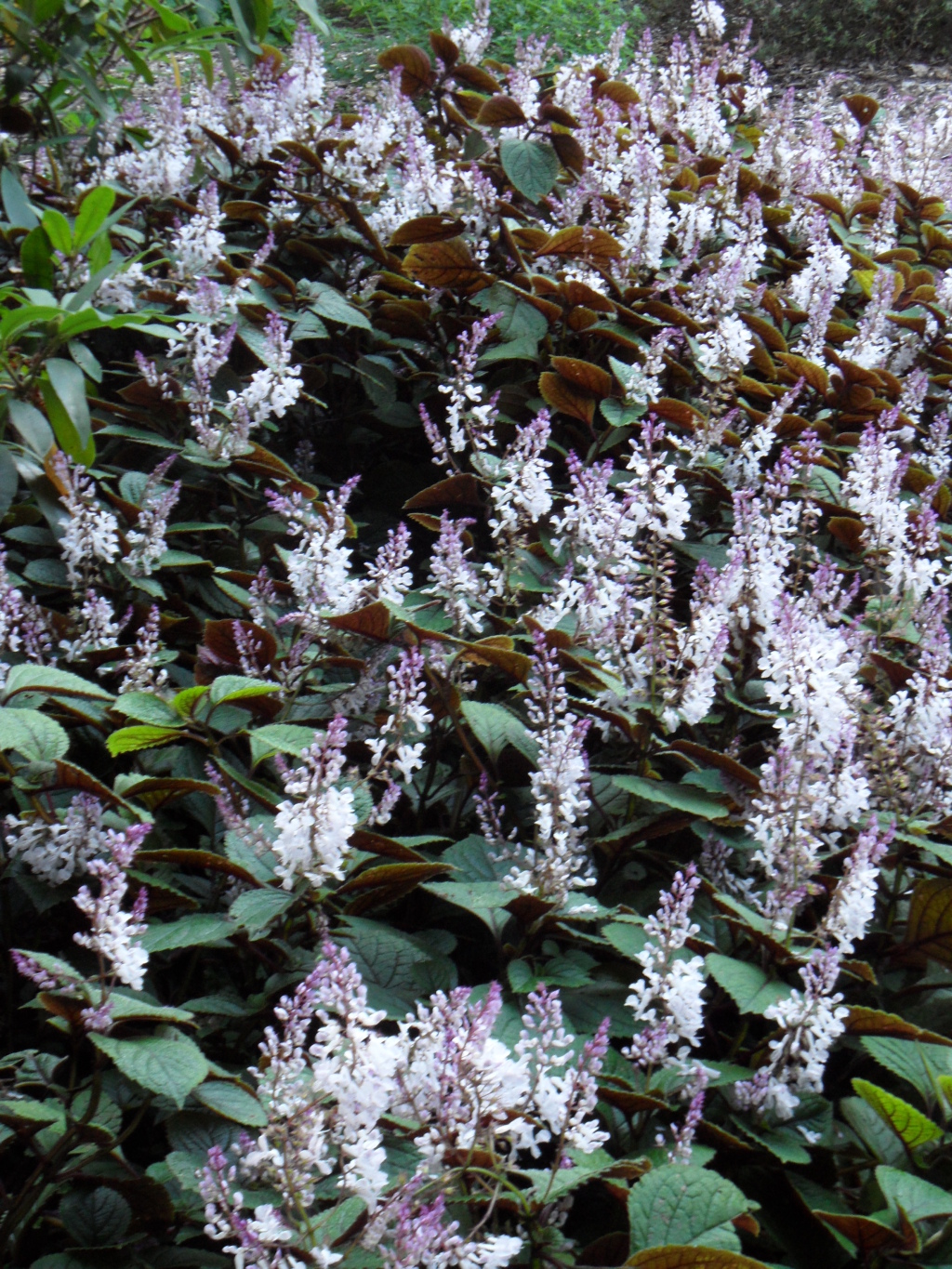Plectranthus ciliatus
E.Mey. ex Benth.Pleasantly aromatic, soft, perennial straggling herb or shrublet to c. 60 cm high, succulent; branches spreading to erect, densely covered with maroon-purple, long multicelled, spreading hairs, short gland-tipped hairs and orange sessile glands more common distally. Leaves broadly elliptic, broadly ovate or subcircular, lamina (3.5–)4–8 cm long, 3–5.5 cm wide, thin-textured and smooth to thickish and rugose, sparsely to moderately hairy (hairs mostly restricted to veins below), densely covered with honey-coloured sessile glands below, apex acute to obtuse, margin regularly and shallowly crenate, with 8–14 pairs of teeth; petiole 1.5–3.5 cm long. Calyx 4–5 mm long (8–10 mm long in fruit); corolla 12–15 mm long, whitish, freely speckled with purple on the inner surface of the lips, tube slightly decurved, lobes with sessile glands. Flowers throughout the year.
GipP, OtP, WaP, HSF, OtR. Also naturalised NSW. Native to south-east Africa. Naturalized in Eucalyptus regnans tall open-forests near Cape Otway and in the Warburton district (one occurrence in the former locality extending over 2 ha and dense, almost to the exclusion of other understorey vegetation). Frequently cultivated.
Conn, B.J. (1999). Lamiaceae. In: Walsh, N.G.; Entwisle, T.J., Flora of Victoria Vol. 4, Cornaceae to Asteraceae, pp. 418–459. Inkata Press, Melbourne.
 Spinning
Spinning

